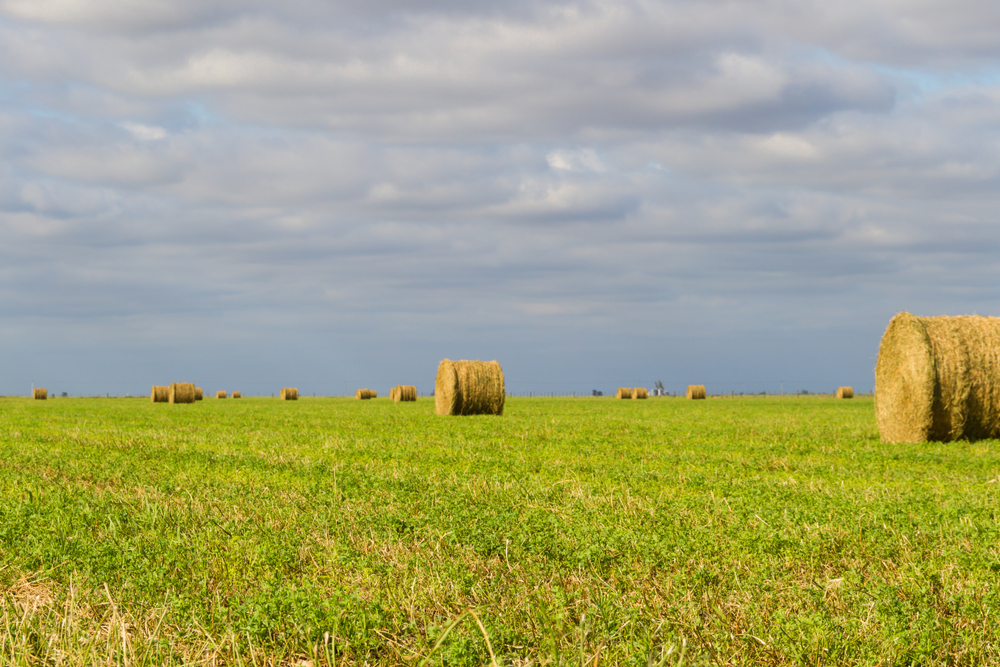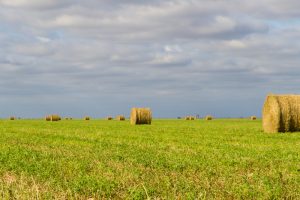

Horses need as much healthy nutrition as possible. These powerful animals need the best hay possible, and the best one to use is alfalfa hay. This eco-friendly and nutritious crop can be susceptible to mold, so you must be careful and use the best provider available, such as David Woods Hay. Mold is a slimy substance that isn’t good to have in any part of your home or business, and it isn’t something you should feed your animals. While it may not kill the animal, it can cause other problems. Here are some steps to take to prevent moldy alfalfa hay.
Cause of Mold on Alfalfa Hay
Regardless of the environment, mold spores can begin germinating within 24 to 72 hours of exposure to moisture. Alfalfa hay is naturally moist, but it begins to reduce upon cutting. At that time, the hay could still be susceptible to mold due to existing fungus on the stalks. If this cut hay is further exposed to moisture during storage, it provides a ripe environment for mold. That’s why being mindful of your existing storage conditions and air circulation is vital to keeping your hay safe for animal consumption.
Only Put Up Dry Hay
Never store wet hay. There are a few methods to dry your alfalfa hay, so use the best for you. In addition to drying the hay, the area itself must be just as cool and dry. It’s best to store your alfalfa hay in a barn or shed with good ventilation. You may also want to apply some covering or further protection for your alfalfa hay within the shed to ensure it’s not exposed to weather elements such as rain or snow.
Use Desiccant
Adding a desiccant to your hay is another good way to help prevent mold. This substance can absorb existing moisture from the air. It’s a big step in keeping your alfalfa hay as dry as possible. Potassium and silicone gels are some of the most commonly used ones.
Use a Preservative
You can also use preservatives on your hay to prevent further fungal or mycobacterial growth. After mixing the preservative with water, you can spray it on the hay bales. Common ones include acetate, sodium diacetate, and HAY-PRO. Try to distribute the sprayed preservatives as evenly as possible and ensure it’s fully dried on the hay before you put it back up for storage.
Seal Hay Bales
Don’t be afraid to seal your hay bales until your animals are ready to consume them. As mentioned, even though you stored hay in a barn, further covering provides extra protection. If a tarp isn’t enough, seal them in plastic. Always double-check that your alfalfa hay is completely dry before covering or sealing it. Even after you seal it, you should still check it periodically for the presence of mold.
Keep a Healthy Storage Unit
Don’t throw your hay just anywhere, even if you’ve sealed them in a plastic covering or tarp. The area you store them in should always be clean, dust-free, and mold-free. Do a good sweep of any storage area your hay is in, and make sure the area is dry. Double-check the space for any existing mold. The mold can quickly spread to your exposed hay, whether it is on the walls, floor, or corners.
Check the Humidity
Humidity levels are the breeding ground for mold. Don’t be afraid to use a hygrometer to test the level of humidity in your barn or storage unit. Ideally, the level should be between 40 and 50%. The best way to reduce humidity is to ensure that the area you store your alfalfa hay has proper airflow and ventilation throughout the area.
Cultivars
A cultivar refers to a plant variety bred for a particular purpose. You can prevent mold by using related cultivars. There are many cultivars to choose from, so it’s best to do your research to see which one works for you. The Mancan is one of the most mold-resistant alfalfa hay varieties. Long-stemmed hay has a higher likelihood of becoming molded than short ones.
Regular Inspections
Once you’ve put away your dry hay and sealed it, don’t forget about it. Do regular inspections of any alfalfa hay in your storage to ensure it’s still mold-free and good for consumption. Mold can show up by way of musty odors or discoloration ( often white). In addition to your visual inspection, you can also lightly squeeze the ball to check for internal discoloration.
Measure Mold Spores
With a device, you can measure the amount of existing fungus or mold on your alfalfa hay. It can give you peace of mind that you’re feeding your animals the best feed possible. Not feeding your animals moldy hay can ensure they’re not exposed to mycotoxins which can damage their health.
Buy From a Good Source
If you don’t grow your alfalfa hay, buy it from a reputable source. It’s always best to deal with a provider that’s been in the business for a long time with a solid reputation for providing clean and mold-free hay. One such provider is David Woods Hay. The company has been in the business for over 30 years. They are known for providing the highest quality alfalfa hay bales nationwide.
In conclusion, you want to feed your horses and other livestock the best and healthiest alfalfa hay possible. One of the last things you should ever give your livestock is feed with mold on it. One of the best ways to prevent moldy feed is by following the steps above and keeping it as dry as possible. The first step is to get your alfalfa hay from a reputable provider such as David Woods Hay, which has been providing top-notch animal feed for over 30 years.
